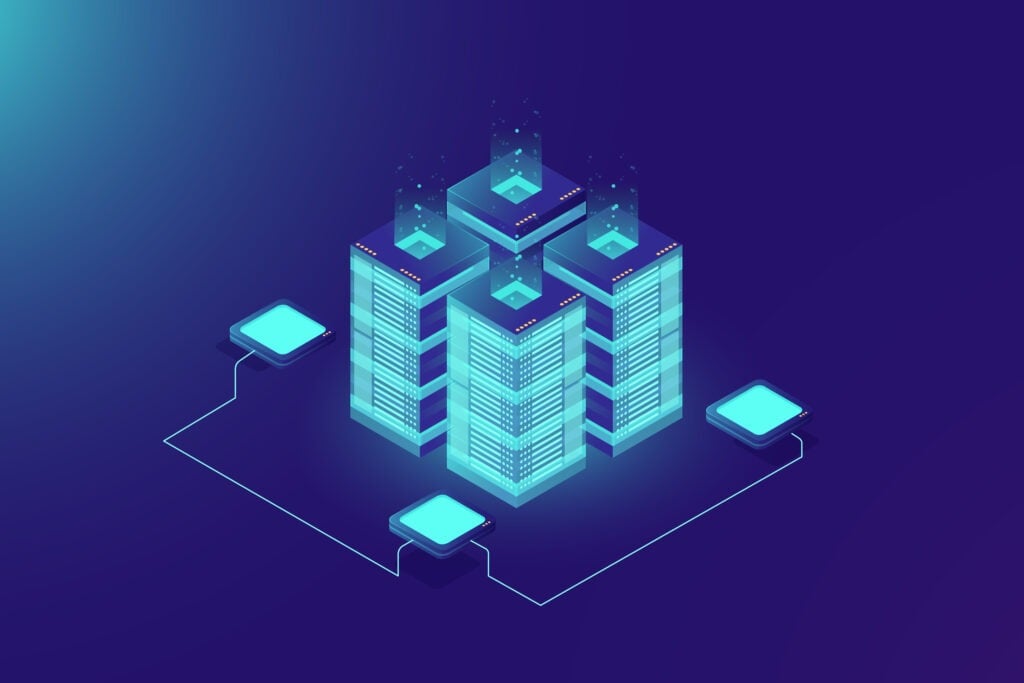Blockchain technology is revolutionizing the way we think about data and trust. But what exactly is Layer 1 in blockchain, and why is it so important?
In simple terms, Layer 1 blockchain is the foundation of all blockchain networks. It’s the underlying technology that enables secure, decentralized transactions and data storage. Without Layer 1 blockchain, there would be no blockchain.
There are many different types of Layer 1 blockchains, each with its own strengths and weaknesses. Some of the most popular Layer 1 blockchains include Bitcoin, Ethereum, and Solana.
As blockchain technology continues to evolve, Layer 1 blockchains will become even more important. They will play a key role in the development of decentralized finance (DeFi), the metaverse, and other cutting-edge applications.
So if you’re interested in the future of blockchain, it’s important to understand Layer 1 blockchain. This is the foundation upon which all other blockchain applications are built.
What are the Key Characteristics of Layer 1?
- Decentralization: Layer 1 blockchain is designed to be decentralized, meaning that no single entity or authority has control over the network. Decentralization ensures that the network is resistant to censorship, manipulation, and single points of failure.
- Consensus Mechanisms: Layer 1 blockchain networks utilize consensus mechanisms to achieve agreement on the validity of transactions and the state of the blockchain. Popular consensus mechanisms used in Layer 1 blockchains include Proof of Work (PoW), Proof of Stake (PoS), and Delegated Proof of Stake (DPoS).
- Security: Layer 1 blockchains prioritize security to protect against attacks and ensure the integrity of the network. The use of cryptographic algorithms and consensus mechanisms helps to prevent unauthorized access, double-spending, and tampering with the blockchain’s data.
- Data Storage: Layer 1 blockchains store the entire transaction history and data of the network. This ensures transparency and immutability, as every transaction is recorded and cannot be altered or deleted.
Decentralization in Layer 1 Blockchain:
Decentralization is a core principle of Layer 1 blockchain networks. It is achieved by distributing the network’s nodes across multiple participants, often referred to as validators or miners. Each participant has a copy of the blockchain and participates in the consensus process to validate transactions and maintain the network’s integrity. This distributed nature of Layer 1 blockchain ensures that no single entity can control or manipulate the network.
Importance of Security and Consensus Mechanisms:
Security is crucial in Layer 1 blockchain networks to protect against various threats, including hacking attempts, fraud, and data manipulation. Consensus mechanisms play a vital role in ensuring the security of the network by enabling agreement among participants on the validity of transactions and the state of the blockchain. These mechanisms prevent malicious actors from gaining control over the network and ensure that only valid transactions are added to the blockchain.
What are the Advantages of Layer 1 Blockchain?
Layer 1 blockchain brings forth several advantages that have the potential to revolutionize the digital landscape. Let’s delve into the scalability and performance enhancements, the ability to handle high transaction volumes with low latency, the support for complex smart contracts and decentralized applications (dApps), and showcase real-world examples of successful Layer 1 blockchain projects.
Scalability and Performance Enhancements:
Layer 1 blockchain networks address the scalability challenge that many blockchain networks face. By implementing innovative solutions, such as sharding, sidechains, or improved consensus algorithms, Layer 1 blockchains enhance scalability. These techniques enable networks to handle a significant number of transactions per second (TPS), reducing congestion and allowing for smoother and more efficient transaction processing.
Handling High Transaction Volumes with Low Latency:
Layer 1 blockchain networks are designed to handle high transaction volumes while maintaining low latency. With the use of advanced protocols and optimized data structures, Layer 1 blockchains can process a large number of transactions simultaneously. By leveraging techniques like parallel processing and efficient transaction validation, Layer 1 blockchains ensure that the network can handle increasing transaction loads without compromising performance.

Support for Complex Smart Contracts and dApps:
Layer 1 blockchain provides a robust foundation for supporting complex smart contracts and decentralized applications (dApps). With the integration of Turing-complete programming languages, Layer 1 blockchains empower developers to create highly sophisticated and autonomous applications. The ability to execute complex smart contracts directly on the Layer 1 blockchain eliminates the need for intermediaries, enhances security, and fosters a more efficient decentralized ecosystem.
Here are some Real-World Examples:
Several successful Layer 1 blockchain projects have made significant impacts across various industries:
- Ethereum: Ethereum is a prominent example of a Layer 1 blockchain that enables the development of decentralized applications and the execution of smart contracts. It has revolutionized industries such as finance (DeFi), non-fungible tokens (NFTs), and supply chain management by providing a platform for programmable digital assets and autonomous transactions.
- Solana: Solana is a Layer 1 blockchain known for its scalability and high-performance decentralized applications. With its unique architecture, Solana can handle thousands of transactions per second and offers low fees, making it well-suited for applications requiring high throughput, such as decentralized exchanges and gaming platforms.
- Avalanche: Avalanche is another Layer 1 blockchain that prioritizes scalability and fast consensus mechanisms. It supports the creation of decentralized applications, providing developers with a scalable infrastructure for various use cases, ranging from DeFi protocols to decentralized social networks.
These successful Layer 1 blockchain projects exemplify the potential impact of this technology across different industries. They have revolutionized finance, gaming, supply chain management, and more, by empowering developers and enhancing security, transparency, and efficiency within their respective sectors.
What are the Challenges and Limitations?
While Layer 1 blockchain provides significant advantages, it also faces challenges and limitations that need to be addressed. Let’s examine the scalability challenges, energy consumption concerns, trade-offs between decentralization and scalability, and potential risks and security vulnerabilities associated with Layer 1 blockchain networks.
Scalability Challenges Faced by Layer 1 Blockchain Networks:
- Layer 1 blockchain networks often face scalability challenges when dealing with a high volume of transactions.
- Increased transaction volume can result in network congestion and slower transaction processing times.
- Sharding, sidechains, and other techniques are employed to enhance scalability by distributing transaction processing across multiple chains or layers.
Energy Consumption Concerns Associated with Layer 1 Blockchain:
- Layer 1 blockchain networks, particularly those using Proof of Work (PoW) consensus mechanisms, can be energy-intensive.
- PoW requires significant computational power for mining and transaction validation, contributing to environmental concerns.
- Efforts are being made to develop more energy-efficient consensus mechanisms, such as Proof of Stake (PoS), to address these concerns.
Trade-Offs Between Decentralization and Scalability in Layer 1 Blockchain:
- Achieving high scalability often involves trade-offs with decentralization in Layer 1 blockchain networks.
- Implementing techniques like sharding or increasing reliance on trusted nodes may compromise decentralization.
- Striking the right balance between decentralization and scalability is a challenge for network architects and developers.
Risks and Security Vulnerabilities in Layer 1 Blockchain Networks:
- Layer 1 blockchain networks face potential risks such as 51% attacks, where a single entity gains majority control over the network’s computing power.
- Smart contract vulnerabilities, coding errors, or flaws in execution environments can lead to financial losses or unauthorized access.
- Regular audits, bug bounties, and robust security protocols are essential to mitigate these risks and vulnerabilities.
Here’s a table that summarize some advantages and challenges of Layer-1 Blockchain,
| Advantages of Layer 1 Blockchain | Challenges of Layer 1 Blockchain |
|---|---|
| Decentralization: Distributes control, promotes transparency and trust. | Scalability: Handling high transaction volumes and network congestion. |
| Scalability: Ability to process a high volume of transactions. | Energy Consumption: Significant energy usage, particularly with PoW. |
| Security: Robust security measures and consensus mechanisms. | Trade-offs: Balancing decentralization and scalability. |
| Consensus mechanisms: Agreement on transaction validity and integrity. | Risks and Security Vulnerabilities: 51% attacks, smart contract vulnerabilities. |
| Interoperability: Seamless communication between different protocols. |
Layer 1 vs Layer 2
The transition from Layer 1 to Layer 2 solutions was necessary to address the scalability limitations of blockchain networks. Layer 2 solutions offer off-chain transaction processing and storage, enabling higher throughput, faster transactions, and reduced fees. This scalability enhancement allows for broader adoption and facilitates various use cases. However, there may be trade-offs in terms of decentralization and reliance on trusted intermediaries. Overall, the move to Layer 2 solutions has made blockchain technology more scalable, cost-effective, and versatile.
| Layer 1 | Layer 2 |
|---|---|
| Base protocol | Built on top of Layer 1 |
| Handles validation, consensus, and data storage | Offloads transaction processing and data storage |
| Examples: Bitcoin, Ethereum, Cardano | Examples: Lightning Network, Polygon |
| Focuses on scalability, throughput, and security at the base layer | Enhances scalability and efficiency without fundamental changes to Layer 1 |
| Scaling solutions may involve sharding or sidechains | Allows for off-chain computation and improved functionality |
| Requires consensus among participating nodes | Relies on cryptographic proofs and periodically settles transactions on Layer 1 |
| Offers high security and decentralization | Trades off some decentralization and security for improved scalability and efficiency |
Final Thoughts
In conclusion, the blockchain ecosystem is comprised of different types of networks and protocols. While it may seem complex at first, understanding the basic concepts helps simplify the overall structure. This knowledge becomes especially important when studying new blockchain projects that focus on connecting networks and sharing data. By grasping the difference between layer-1 networks and layer-2 protocols, individuals can make informed decisions and contribute to the growth of the industry. Keeping up with the latest developments and exploring network interoperability enables individuals to unlock new opportunities and drive innovation in various industries.

- What is Layer-1 in blockchain?
Layer-1 refers to the foundational blockchain protocol. This is the main network where the raw transactional data of the blockchain resides.
- What role does Layer-1 play in the blockchain?
Layer-1 is the foundation of a blockchain system. It is responsible for basic operations, including transaction processing and network security.
- How does Layer-1 blockchain operate?
Layer-1 operates using a consensus mechanism. The type of mechanism depends on the specific blockchain. This mechanism allows all nodes in the network to agree on the ledger’s current state.
- Why is Layer-1 important?
Layer-1 is crucial as it directly determines the performance and resilience of higher-level layers in a blockchain network.
- What are examples of Layer-1 blockchains?
Examples of Layer-1 blockchains include Bitcoin, Ethereum, and Binance Smart Chain.
- What is Layer-2 in blockchain?
Layer-2 is a secondary framework or protocol built on top of an existing blockchain (Layer-1). The purpose of Layer-2 blockchains is to increase the scalability and speed of transactions.
- How does Layer-2 differ from Layer-1?
The key difference between Layer-2 and Layer-1 is that Layer-2 works atop Layer-1 to speed up transactions and reduce fees. Layer-1 forms the base blockchain, while Layer-2 is secondary.
- What is a consensus mechanism in blockchain?
A consensus mechanism is a method through which all nodes on a blockchain network agree about the current state of the distributed ledger.
- Why are consensus mechanisms important for Layer-1 blockchains?
Consensus mechanisms are crucial for Layer-1 blockchains because they determine how the network verifies transactions and achieves agreement among nodes.
- Does Ethereum use a Layer-1 blockchain?
Yes, Ethereum uses a Layer-1 blockchain. Its current consensus mechanism is proof-of-work, but it is transitioning to proof-of-stake with Ethereum 2.0.




